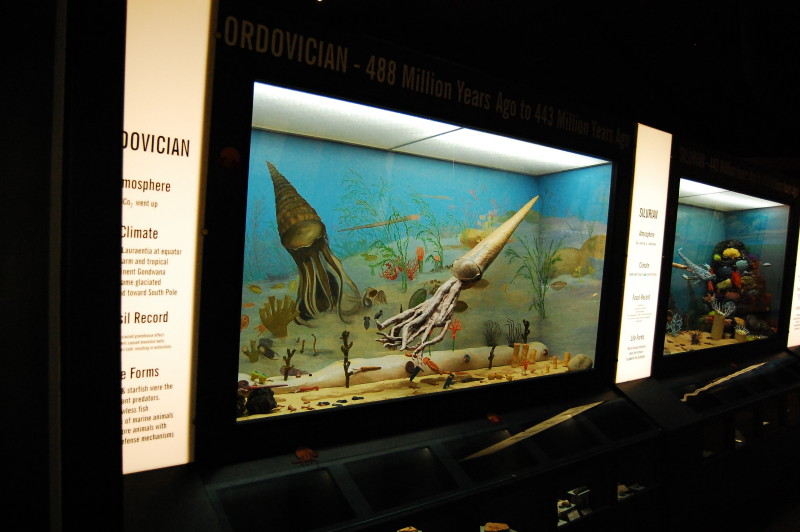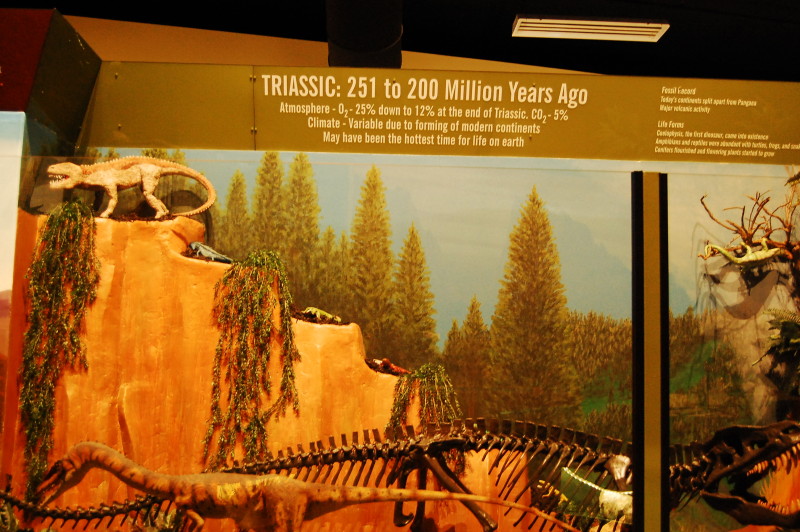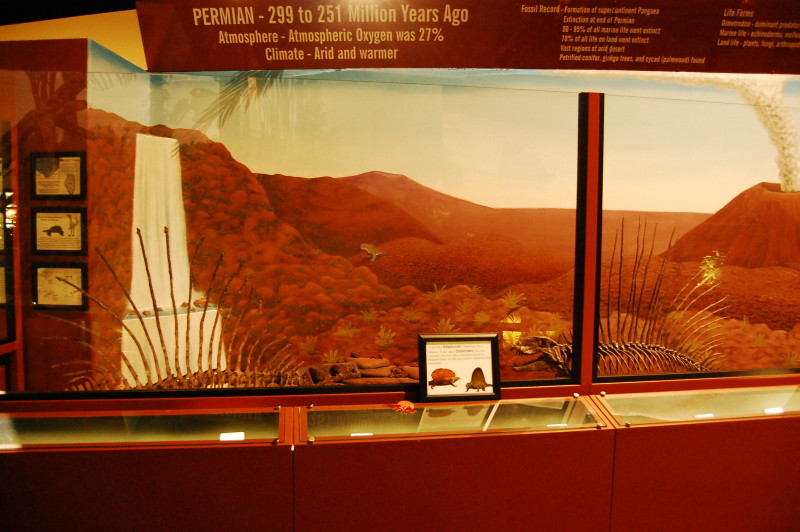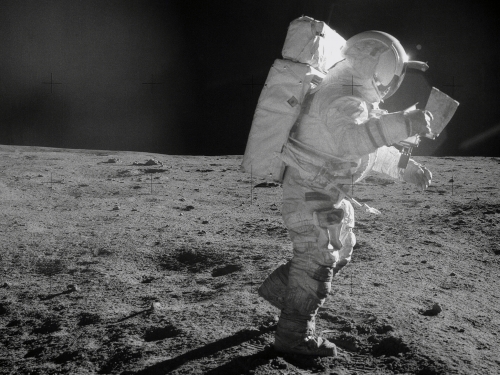Here you will find in the fossil cases and in the diorama an extensive presentation of the fossils of the
Carboniferous period.
The Carboniferous period is known for its plant life. Amphibians walked the lands. Ferns and vine
like plants were common at the time. Large insects roamed during the Carboniferous period due to the
moist and swampy environment. Giant dragonflies, centipedes, and cockroaches have also been found. Sharks dominated the oceans and some even found their way to the fresh water rivers and lagoons. At the end of the Devonian period glaciers formed on the land. They lowered the sea levels and mountains were formed as the continents crashed together to form the super continent Pangea.
Different plant fossils let us know what the landscape in this period would have looked like. You can tell what kind of trees lived and what kind of moss or algae grew on rocks. The fossil fern in Case A gives insight into what creatures were eating during the Carboniferous period and how they might have lived. The Trilobite track fossil is astonishing. A very small trilobite walked across the land and millions of years later we are getting to witness its journey.
The Sea Urchin in case B is an interesting fossil as well. It is misshapen but you can tell that the sea urchins that lived during the Carboniferous period were very similar to the ones we have now.





